- The Chytrid fungus — blamed for declines in 200 amphibian species globally — has missed Madagascar so far. But one new study says Bd is there and spreading, so funds should be focused on disease mitigation, while another study says it hasn’t taken hold, and more controls should be applied at Madagascar’s borders.
- Scientists and policymakers the world over face similar tough decisions when they try to determine how to use limited funds to best deal with the sudden emergence of wildlife disease epidemics, such as white-nose syndrome, which has killed millions of North American bats since its appearance in 2006.
- Lessons learned from past epidemics are helping U.S. scientists and federal agencies cope with the Bsal fungus, as they seek cooperation from the international pet trade to quarantine the nation and protect wild salamanders.
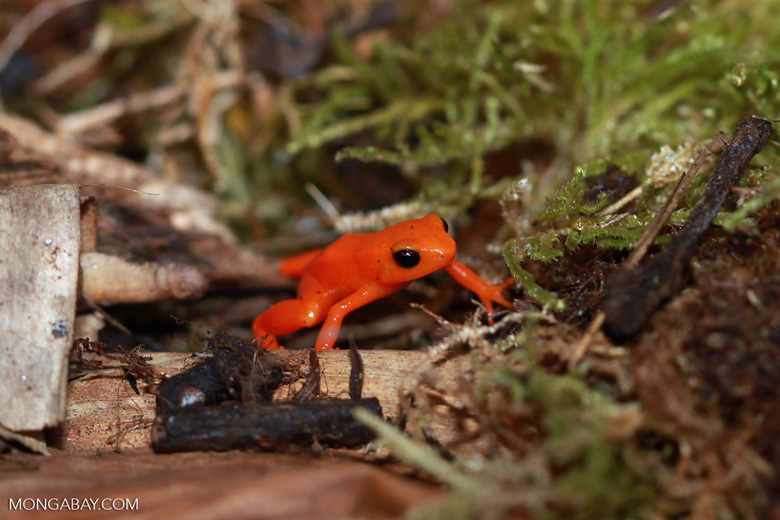
Madagascar is rich in amphibian species. It boasts 500 species of frog, almost all endemic, with more likely undiscovered. That diversity could be in immediate jeopardy due to the chytrid fungus — then again, maybe not.
Two new, but possibly conflicting, studies, one saying that the fungus is in country and spreading, the other saying it has not yet taken a firm hold, are leaving policymakers with more questions than answers about how to use limited funds to most effectively combat the problem.
This sort of quandary isn’t isolated to Madagascar or frogs. New plant and animal diseases are emerging around the globe. Creating better approaches to the assessment of current, sometimes conflicting, research in order to make informed, high-stakes conservation decisions to protect species from emerging epidemics is becoming increasingly important.
“Many conservation concerns hang in the balance of limited resources,” explained Molly Bletz, lead author of one of the two recent Madagascar studies, and a researcher investigating how to use bacteria to protect Malagasy and global amphibians from the chytrid fungus. “Coupled with the lack of a full scientific understanding of the conservation problem at hand, this can indeed lead to challenging decisions for conservationists,” she added.
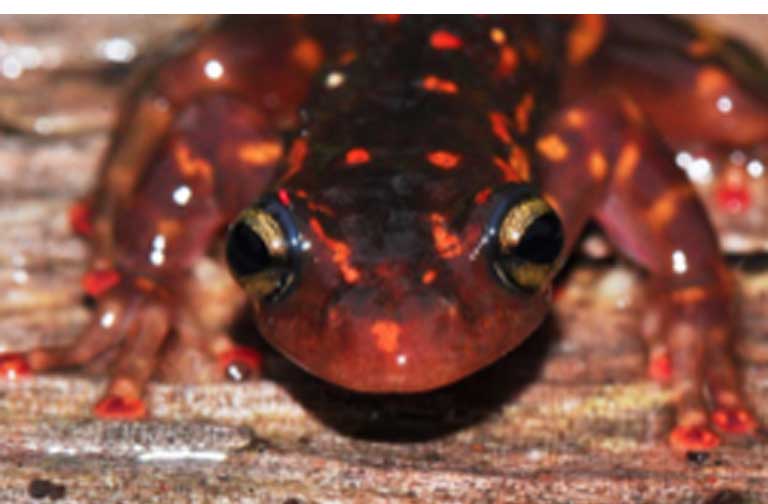
First detected in 1998, Batrachochytrium dendrobatidis (Bd) is a fungus blamed for serious declines in more than 200 amphibian species around the world. The infection causes amphibian skin to thicken, disrupting homeostasis — the body’s ability to balance internal functions — ultimately leading to heart failure.
Until recently, the disease was thought to have missed Madagascar, the fourth largest island on earth, located off the east coast of Africa. Then over the last year, two different research teams published chytrid sampling results that seemed at odds: one group found widespread presence of the fungus in Madagascar, the other did not.
From a management standpoint, those findings create a difficult fork in the road. That’s because the approach for dealing effectively with a disease that’s already present in a country is quite different from preventing one from moving in.
Conflicting results demand different responses
When the first group, led by Molly Bletz, published its study results in Scientific Reports, their findings showed a small, but definite Bd presence in five different areas of Madagascar. No die-offs or signs of disease were discovered when they sampled more than 4,000 frogs over the course of nine years. But the presence of the fungus was found in all four families of native Malagasy frogs.
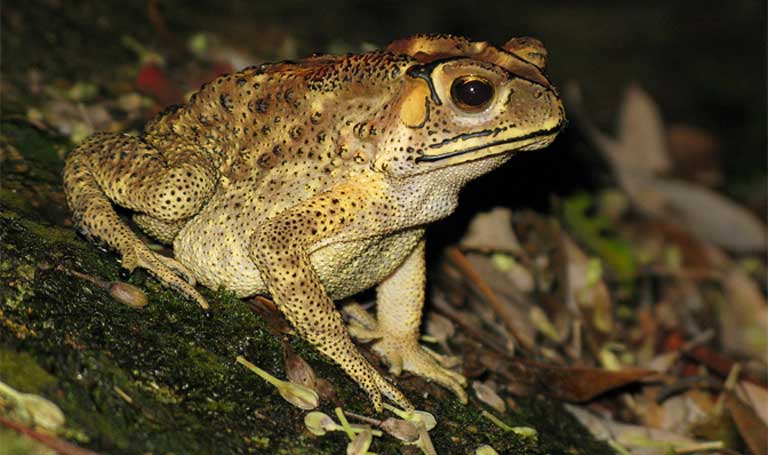
These findings, promoted the researchers to recommend continued surveillance, the boosting of population monitoring and enhancement of disease mitigation research.
These proposed actions were in line with the Sahonagasy Action Plan, put in place in 2008 to deal with a potential Bd presence. The national monitoring plan already includes twice-yearly surveillance at eight sites, and plans that would support captive breeding programs and research for treatments that could help afflicted Madagascar amphibians.
Not long after the first study was published, Jonathan Kolby, from Australia’s James Cook University, and his team published a paper in PLOS One concluding that Bd, while present in Madagascar, was not at levels that posed an immediate threat to its amphibians. His sample size of 538 animals was smaller than that of Bletz’s group, and the 2-month testing interval was shorter. But Kolby also examined environmental samples from dozens of waterways and used multiple detection techniques.
To Kolby, the discrepancies between the two studies could indicate that the fungus has not yet become established in Madagascar, even though small amounts of the amphibian chytrid have been found on the island. He suggested that efforts and funding should be focused on biosecurity measures to prevent Bd from gaining a foothold in Madagascar.
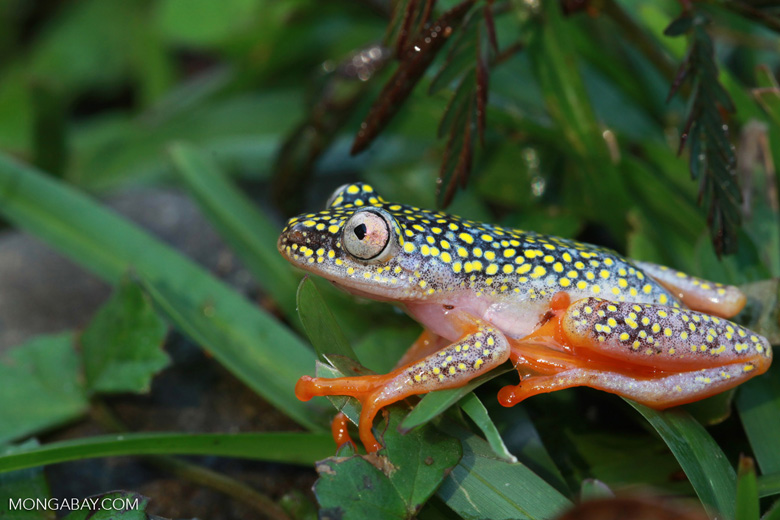
Subsequently, Bletz and her colleagues published a formal response, pointing out how the results of both studies, though they seem to conflict, share common ground: both showed that chytrid was present in the country. However, to Kolby, the sticking points were less about scientific methods and more about management plans.
“The way it stands now, people on the ground and the government are doing the best they can to identify Bd-positive locations as quickly as possible to detect a disease-driven decline [in Madagascar amphibian numbers] — if it ever occurs. Others are also preparing for worst case scenarios with captive breeding programs and disease treatment research,” said Kolby. However, he sees vulnerability and “a large gap where biosecurity actions could help prevent Bd establishment [in the country], and reduce the likelihood that disease will emerge in the future.”
Making hard choices
Uncertainty is inherent to some degree in all science, and it often takes numerous studies and many data set comparisons to reach consensus. But decision makers often don’t have the luxury of waiting for conclusive proof in a modern world where new diseases can emerge and spread rapidly, especially in developing countries where there’s only enough money to take a single approach. Getting it wrong can be costly to wildlife and ecosystems.
Kolby suggests that improved communication between researchers and stakeholders — and agreement on priorities and goals — could better inform disease control and conservation management programs. “Scientists are really good at doing science and our studies produce important data,” he said. “But if the government has other priorities, then research won’t contribute as much to disease management as efforts more aligned with the priorities and abilities of policymakers. Active dialogue between researchers, government, and other stakeholders is essential.”

Kolby’s comments echo the findings of a working group on fungal pathogens and disease-induced extinction, which met through the National Center for Ecological Analysis and Synthesis (NCEAS) in California, starting in 2013. The group reviewed past and current efforts to manage a variety of wildlife diseases, including white-nose syndrome (Pseudogymnoascus destructans), which has killed more than six million hibernating bats since first documented in New York state in 2006.
“One of the remarkable things that happened after discovering white-nose syndrome [WNS] in the U.S. was the coordination of the response,” noted Kate Langwig, a former University of California Santa Cruz graduate student and member of that NCEAS-organized working group.
The key was keeping wildlife managers and government in the scientific loop. “That allowed for interdisciplinary conversations among researchers, cavers, wildlife managers and policy makers which led to a national plan,” said Langwig. “From that experience, we learned we have to move quickly and be proactive.”

Langwig and her colleagues published their conclusions in Frontiers in Ecology and the Environment. There, they synthesized a set of guidelines for wildlife disease strategies to improve responses to such pathogens. “Management needs to be conducted in a context-dependent way, one that depends on the stage of the disease. To give an extreme example, there’s no point in culling all the bats in a cave, when sites in the surrounding 25-mile area are already affected by the disease,” said Langwig.
Still, coordinating such efforts can be complicated when it comes to animal-only diseases, which lack extensive resources to track and control them. The WNS situation was arguably easier at the outset, with the initial discovery confined to one state in one country. In global outbreaks, there is no single agency — no World Health Organization for animals — to direct on-the-ground efforts and guide policies, noted Jamie Voyles, a University of Nevada-based biologist who specializes in emerging infectious diseases.
A few forums have been established for animal disease reporting. Since 1993, global data on wildlife diseases has been collected by the World Organization for Animal Health (abbreviated OIE for its former name, the Office International des Epizooties). Historically, the common denominator among the animal diseases tracked by OIE was their potential to impact human health.
Then, in 2013, the World Animal Health Information System (WAHIS) used their database to track 53 “non-OIE” diseases specific only to wildlife. These are voluntary listings from the 180 member countries. This year’s list contains 118 diseases and amphibian infections, with Batrachochytrium dendrobatidis on the roster.
“We hope that those kinds of platforms will expand and become more useful for addressing wildlife diseases,” Voyles said.
Learning from the past
Now there’s a chance to put these lessons regarding wildlife epidemic monitoring and management to work on the ground. Starting in 2010, a new, quick-kill, fungus from Asia began wiping out many wild fire salamander populations in the Netherlands and Belgium. The disease hit captive collections in Germany and Great Britain, too.
As far as anyone knows, this devastating disease, caused by Batrachochytrium salamandrivorans, only affects salamanders. But scientists found that the new fungus is related to Bd, and it has a similarly alarming potential to cause species extinctions. Unlike the thickened skin seen with Bd, this new chytrid disease, called Bsal, causes severe ulcers on salamander skin. Testing showed that “41 out of 44 of Western Palearctic salamanders (Salamandridae and Plethodontidae) rapidly died” after experimental Bsal infections.

The fungus, linked to the trade of Asian salamanders, hasn’t yet been identified in North America. A breach of U.S. borders would be a hard hit — the country is home to nearly 50 percent of the world’s salamander species.
In the U.S., researchers pegged the Southeast states, the Pacific Northwest and the Sierra Nevada as “vulnerability zones.” These areas provide habitat for many species in Bsal-susceptible salamander families: the highly diverse “lungless salamanders,” or Plethodontidae, and North American newts (Family Salamandridae).
The booming global salamander pet trade does not bode well for preventing a U.S. Bsal invasion. A study published in Science pointed out that more than two million fire-bellied newts were imported into the country between 2001-09. Five key U.S. import sites are located near the identified high-risk zones.
In May, 2015, the Center for Biological Diversity, based in Arizona, filed a petition with the U.S. Department of Interior seeking an emergency moratorium on imports of salamanders for the pet trade. But the conservation law typically used by the U.S. Fish and Wildlife Service (USFWS), called the Lacey Act, only prohibits illegal trade in wildlife, fish and plants. The law doesn’t extend to invasive fungal pathogens.
“That Act is over 100 years old, and it’s not designed for microbes, bacteria and fungi,” explained Karen Lips, a biologist at the University of Maryland who studies patterns of amphibian population decline at sites in Panama, Illinois and Appalachia. “We have to use Bsal to raise a flag and say: we need a more comprehensive policy, so we don’t have to deal with diseases like this, one at a time. It takes too long.”

Despite the cumbersome policymaking process, efforts to avert a Bsal epidemic in the U.S. have moved forward quickly. In June 2015, a diverse group of stakeholders met to strategize the problem. It was organized by the U.S. Geological Survey’s Amphibian Research and Monitoring Initiative (ARMI), and the Powell Center for Ecological Synthesis, in Colorado.
“We never have perfect information, but often there’s a need to do something anyway,” said Michael Adams, a research ecologist and the lead for ARMI. “We used a formal decision-making approach to find a way to move forward despite uncertainty.”
Borrowed from the business world, this decision analysis framework allows for sifting through multiple goals, objectives and uncertainties. This “rational approach to decision making” is gaining traction in natural resource management, said Evan Grant, the Northeast regional principal investigator for ARMI. Grant was also the lead organizer for the Bsal workshop.
The decision making process is collaborative, including policymakers, stakeholders, and scientists who can provide key information. It’s also transparent, with defined objectives, alternatives and uncertainties, said Grant. Most importantly, it’s not a one-time decision. Re-evaluation is built into the process so plans can adapt to new findings.
One outcome of the Bsal stakeholders meeting is an agreement to design and implement a viable large-scale salamander sampling program, said Adams. While covering all the possible locales and vectors that could harbor Bsal would be “an extraordinarily expensive thing to do for that one purpose,” more sampling could be possible if the effort was linked to other sampling purposes.
Another offshoot of the meeting was the launch of a voluntary moratorium on importing Firebelly (Cynops orientalis) and Paddletail (Pachytriton labiatus) newts, called by the Pet Industry Joint Advisory Council (PIJAC). The U.S. notice went up in November. In early December, PIJAC Canada also supported the shut down of imports.
“There’s many, many more uncertainties than we have dollars to address,” said Grant, the Northeast regional principal investigator for ARMI. “But we have this unprecedented opportunity in the U.S. to use tools from decision analysis to prepare [for a Bsal invasion]. Even if we can’t implement all these proactive or preventative actions, we can still plan for improving our reaction to a potential disease introduction.”
Early this January, the USFWS took advantage of that opportunity. It listed 201 salamander species “as injurious wildlife under the Lacey Act” by invoking an “interim rule,” which allows for faster action than standard procedures for proposed rules. Importing any of those species, or moving them across state lines, was prohibited as of January 28, 2016.
In making that move, USFWS director Dan Ashe said in a press release: “The Bsal fungus has the ability to devastate our native salamander populations, and we are doing everything in our power to protect and preserve these essential amphibians for future generations.”
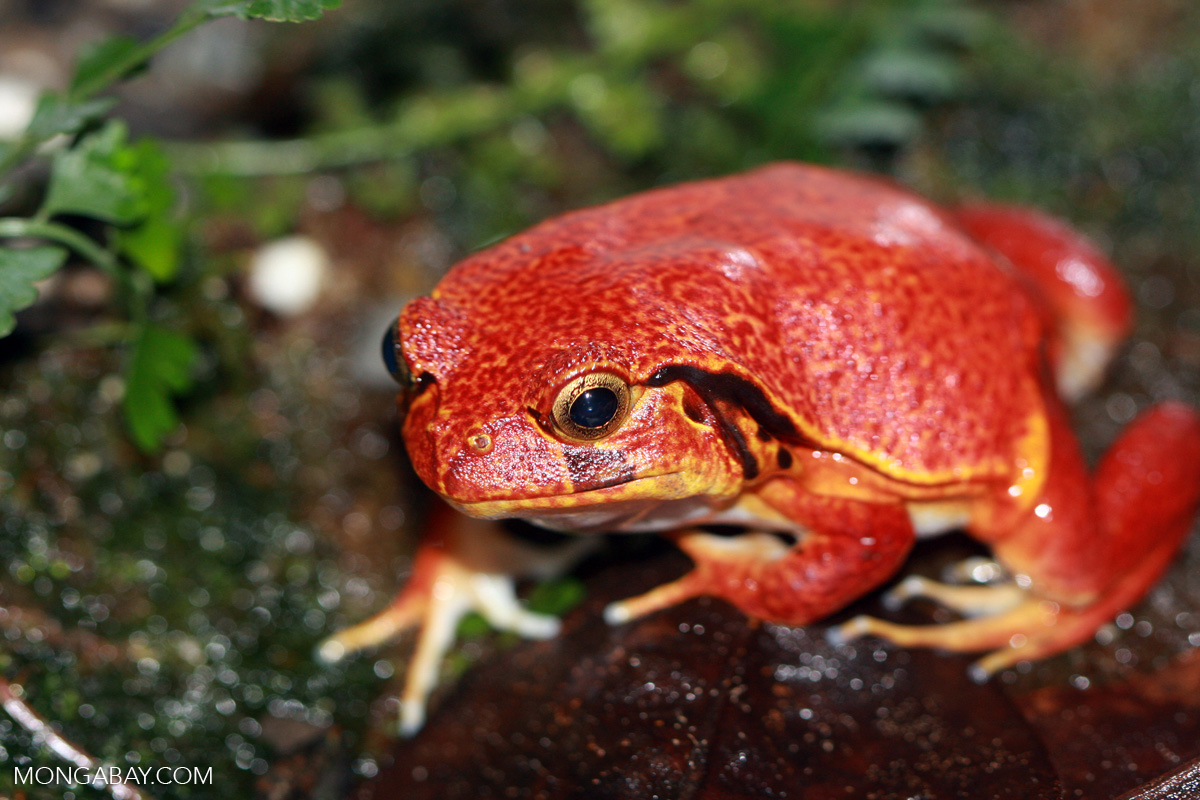
It will still be legal for people to keep these salamander species in captivity, if they already own them. Permits can also still be issued for “scientific, medical, educational or zoological purposes,” according to the USFWS statement.
Back to Madagascar
“Bd seems to be everywhere,” said biologist Karen Lips, “But it’s not clear where it emerged, how it arrived, or whether it’s enzootic,” common to a particular locale. In Madagascar, no one currently knows for sure where chytrid may fall on the continuum of possibilities, she added.
If the fungus has been in the country for a couple of years already, that could mean a variety of things: did the die-offs already happen? Will the die-offs come sometime in the future when some mystery condition changes? Or will there never be a decline because the frogs have adapted? All these, and many other questions still need to be answered by researchers.
“One hundred years ago we didn’t have the global connectivity that spreads these problems so quickly,” said Kolby. “We can’t stop everything. We can’t control everything. But we can respond smarter.”
For the world’s wildlife, the effectiveness of these quick, smart responses — made by scientists, conservationists, and decision makers working in consort — could mark the difference between the life and death of hundreds of species.
Citations:
Bletz MC, et al. (2015) Widespread presence of the pathogenic fungus Batrachochytrium dendrobatidis in wild amphibian communities in Madagascar.
Sci Rep. Vol. 5. doi: 10.1038/srep08633.
Bletz, MC, et al. (2015b). Consistency of Published Results on the Pathogen Batrachochytrium dendrobatidis in Madagascar: Formal Comment on Kolby et al. Rapid Response to Evaluate the Presence of Amphibian Chytrid Fungus (Batrachochytrium dendrobatidis) and Ranavirus in Wild Amphibian Populations in Madagascar. PLoS ONE, Vol. 10. doi: 10.1371/journal.pone.0135900
Gray MJ, et al. (2015) Batrachochytrium salamandrivorans: The North American Response and a Call for Action. PLOS Pathog. Vol. 11. doi:10.1371/journal.ppat.1005251.
James TY, et al. (2015) Disentangling host, pathogen, and environmental determinants of a recently emerged wildlife disease: lessons from the first 15 years of amphibian chytridiomycosis research. Ecol Evol. Vol. 5, p. 4079. doi:10.1002/ece3.1672.
Kolby JE, Skerratt L. (2015) Amphibian Chytrid Fungus in Madagascar neither Shows Widespread Presence nor Signs of Certain Establishment. PLOS ONE. Published online Oct 14. Vol. 10. doi: 10.1371/journal.pone.0139172
Kolby JE, et al. (2015) Rapid response to evaluate the present of amphibian chytrid fungus (Batrachochytrium dendrobatidis) and ranavirus in wild amphibian populations in Madagascar. PLOS ONE. Vol. 10. doi: 10.1371/journal.pone.0125330.
Kolby JE. (2014) Presence of the amphibian chytrid fungus Batrachochytrium dendrobatidis in native amphibians exported from Madagascar. PLoS One. Vol. 9. doi: 10.1371/journal.pone.0089660.
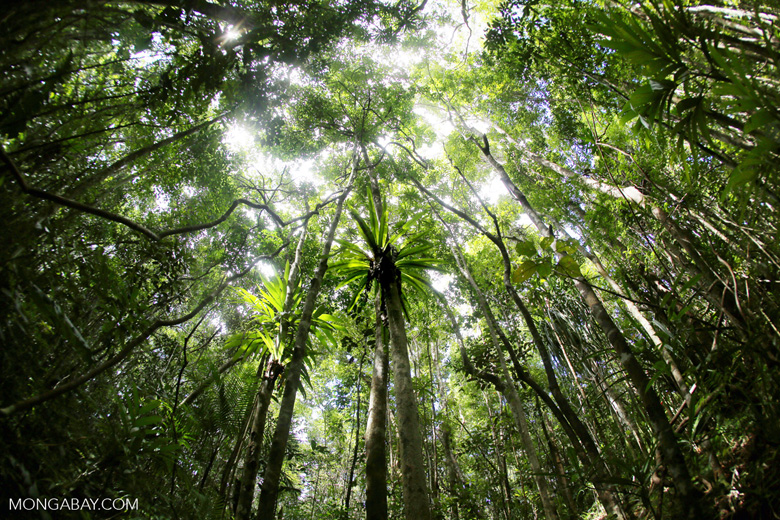
Langwig KE, et al. (2015) Context-dependent conservation responses to emerging wildlife diseases. Front Ecol Environ. Vol. 13, p.195. doi: 10.1890/140241.
Martel A, et al. (2014) Recent introduction of a chytrid fungus endangers Western Palearctic salamanders. Science. Vol. 346, p. 630. doi: 10.1126/science.1258268.
Rosa GM, et al. (2015) ACSAM2, A Conservation Strategy for the Amphibians of Madagascar 2: Abstract Book. Torino: Museo Regionale di Scienze Naturali, Regione Piemonte.
Van Rooij P, Martel A, Haesebrouck F, Pasmans F (2015) Amphibian chytridiomycosis: a review with focus on fungus-host interactions. Veterinary Research. Vol. 46, p.137. doi:10.1186/s13567-015-0266-0.
Voyles, J. et al. (2014) Moving beyond too little, too late: Managing emerging infectious diseases in wild populations requires international policy and partnerships. EcoHealth. First online: 07 October 2014. doi: 10.1007/s10393-014-0980-5.
Yap TA, et al. (2015) Averting a North American biodiversity crisis: a newly described pathogen poses a major threat to salamanders via trade. Science. Vol. 349, p. 481. doi: 10.1126/science.aab1052.
